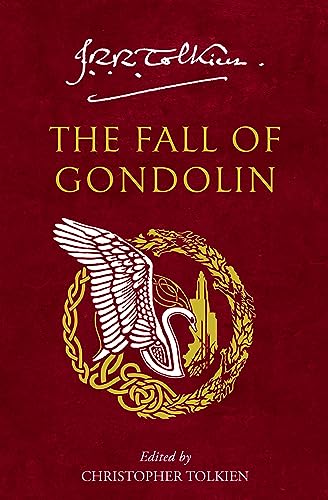Letters  Next
Previous
Next
Previous
Next Previous
 Next
Previous
Next
Previous
TCG Letter #476 / Carpenter Letter #163
From
J.R.R. Tolkien
To
W. H. Auden
Date
7 June 1955
Type
Unknown
Transcript
Partial
Tolkien shares insights into the origins and inspirations behind his writing, particularly focusing on The Lord of the Rings. He discusses the evolution of their linguistic interests, the influence of Finnish and the connection between personal experiences and recurring dreams. The letter also touches on the development of The Hobbit and the challenges of creating a sequel.
Wayne G. Hammond and Christina Scull note in their Chronology (see reference below) that Tolkien wrote to Nancy Smith Letter from J.R.R. Tolkien to Nancy Smith • 25-26 December 1963 (#511)[1] saying he wrote a story of a "great green dragon" when he was approximately six years old, yet in his letter to W.H. Auden of 7 June 1955 he says that he is "about seven". He also notes to Nancy Smith, and in a letter to Paula Coston Letter from J.R.R. Tolkien to Paula Coston (née Iley) • 26 August 1965 (#700)[2] that he wrote some verses about the dragon, and he says to W.H. Auden he had written a "story".
In April 1911 Tolkien was present at the annual Open Debate at King's Edwards School and the report published in King Edward's School Chronicles has a report on the motion "that the works attributed to William Shakespeare were written by Francis Bacon." Tolkien talked with passion that this was the case. The report says Tolkien spoke, pouring "a sudden flood of unqualified abuse upon Shakespeare, upon his filthy birthplace, his squalid surroundings and his sordid character. He declared that to believe that so great a genius arose in such circumstances commits us to the belief that a fair-haired European infant could have a woolly-haired prognathous Papuan parent. After adducing a mass of further detail in support of the Hon. Opener, he gave a sketch of Bacon’s life and the manner in which it fitted into the production of the plays, and concluded with another string of epithets." In the years since this, Tolkien maintained a dislike for Shakespeare, yet in 1911 he describes the writer as a genius.
Wayne G. Hammond and Christina Scull note in their Chronology (see reference below) that Tolkien wrote to Nancy Smith Letter from J.R.R. Tolkien to Nancy Smith • 25-26 December 1963 (#511)[1] saying he wrote a story of a "great green dragon" when he was approximately six years old, yet in his letter to W.H. Auden of 7 June 1955 he says that he is "about seven". He also notes to Nancy Smith, and in a letter to Paula Coston Letter from J.R.R. Tolkien to Paula Coston (née Iley) • 26 August 1965 (#700)[2] that he wrote some verses about the dragon, and he says to W.H. Auden he had written a "story".
In April 1911 Tolkien was present at the annual Open Debate at King's Edwards School and the report published in King Edward's School Chronicles has a report on the motion "that the works attributed to William Shakespeare were written by Francis Bacon." Tolkien talked with passion that this was the case. The report says Tolkien spoke, pouring "a sudden flood of unqualified abuse upon Shakespeare, upon his filthy birthplace, his squalid surroundings and his sordid character. He declared that to believe that so great a genius arose in such circumstances commits us to the belief that a fair-haired European infant could have a woolly-haired prognathous Papuan parent. After adducing a mass of further detail in support of the Hon. Opener, he gave a sketch of Bacon’s life and the manner in which it fitted into the production of the plays, and concluded with another string of epithets." In the years since this, Tolkien maintained a dislike for Shakespeare, yet in 1911 he describes the writer as a genius.
Next Previous





 119
119 38.58K
38.58K